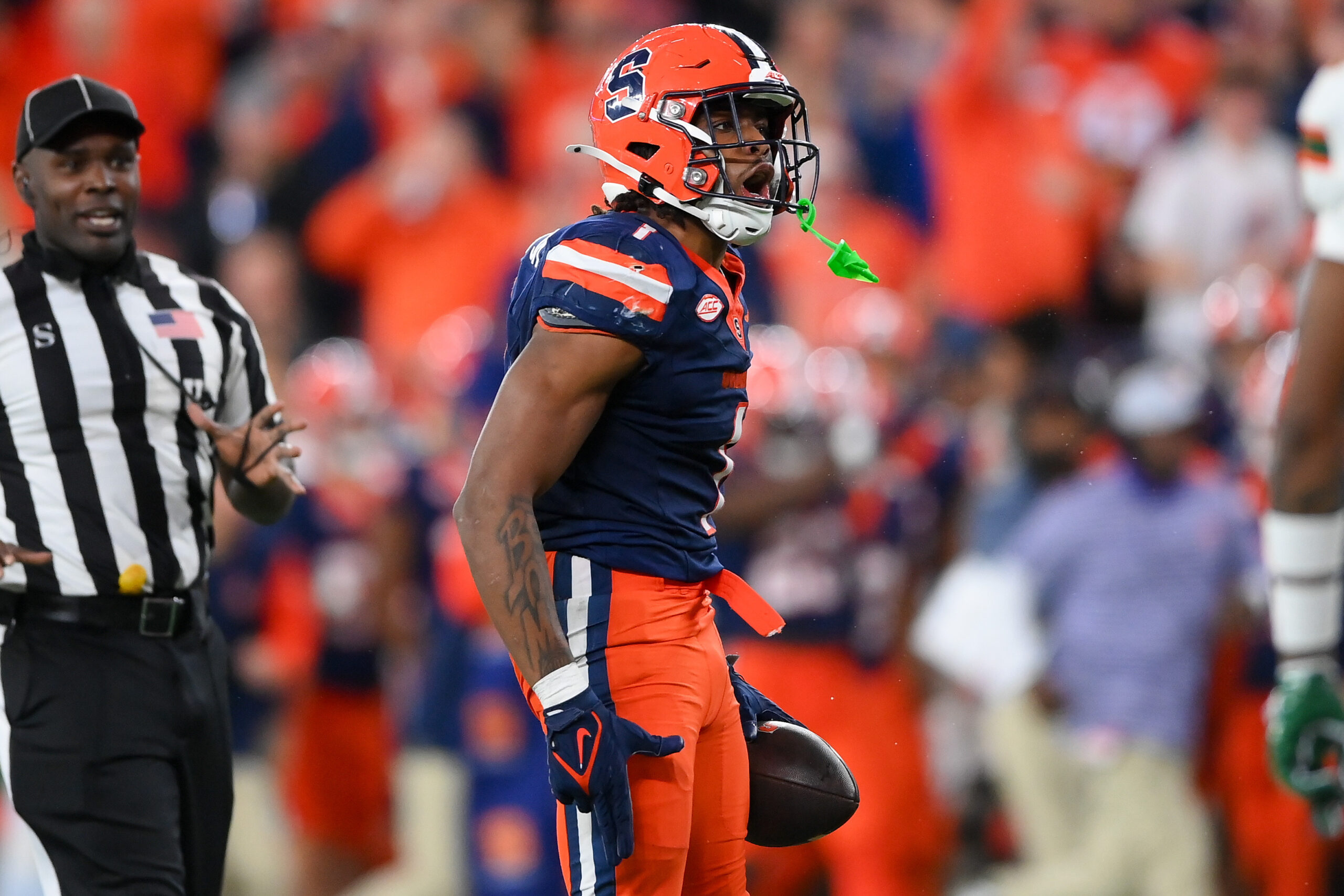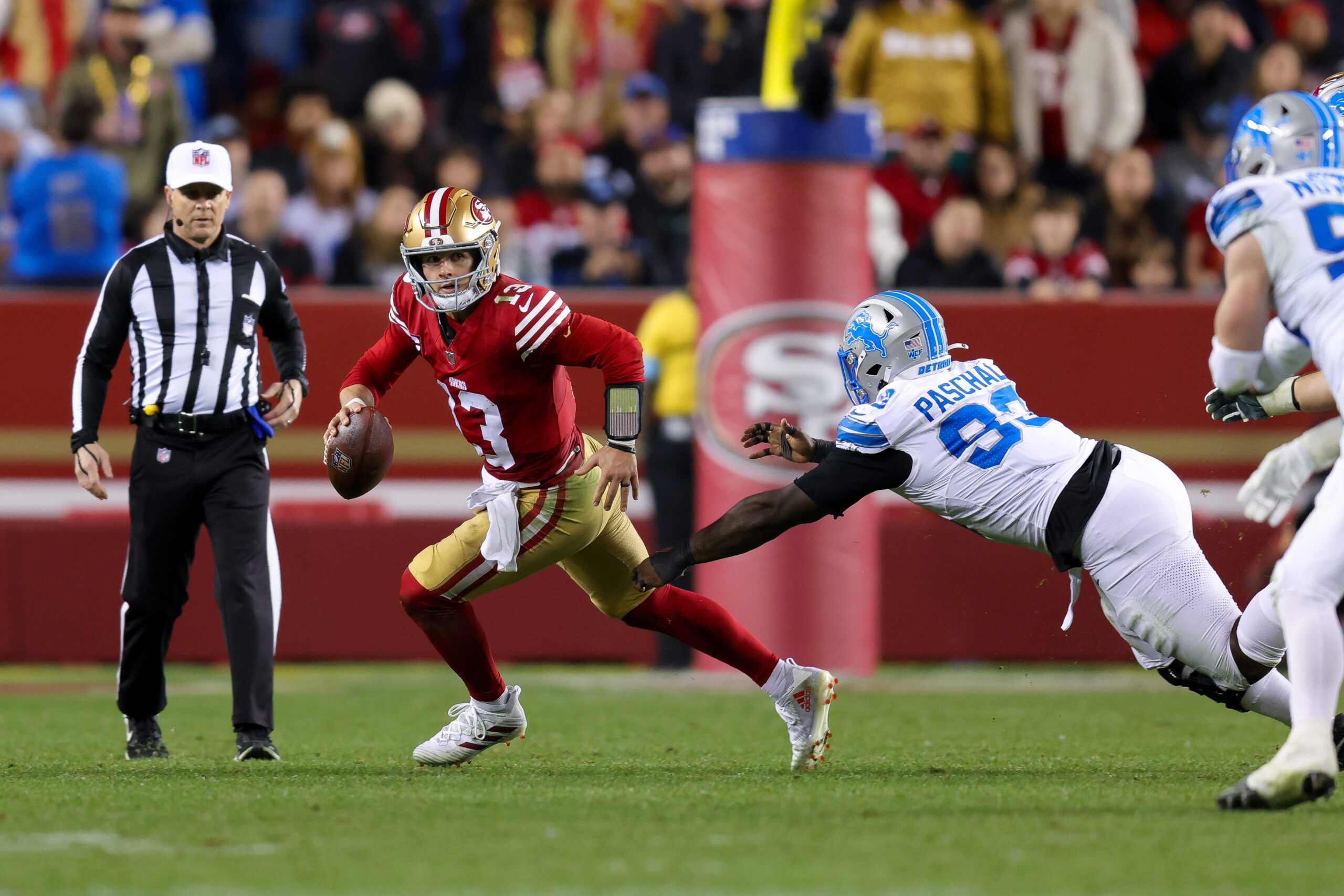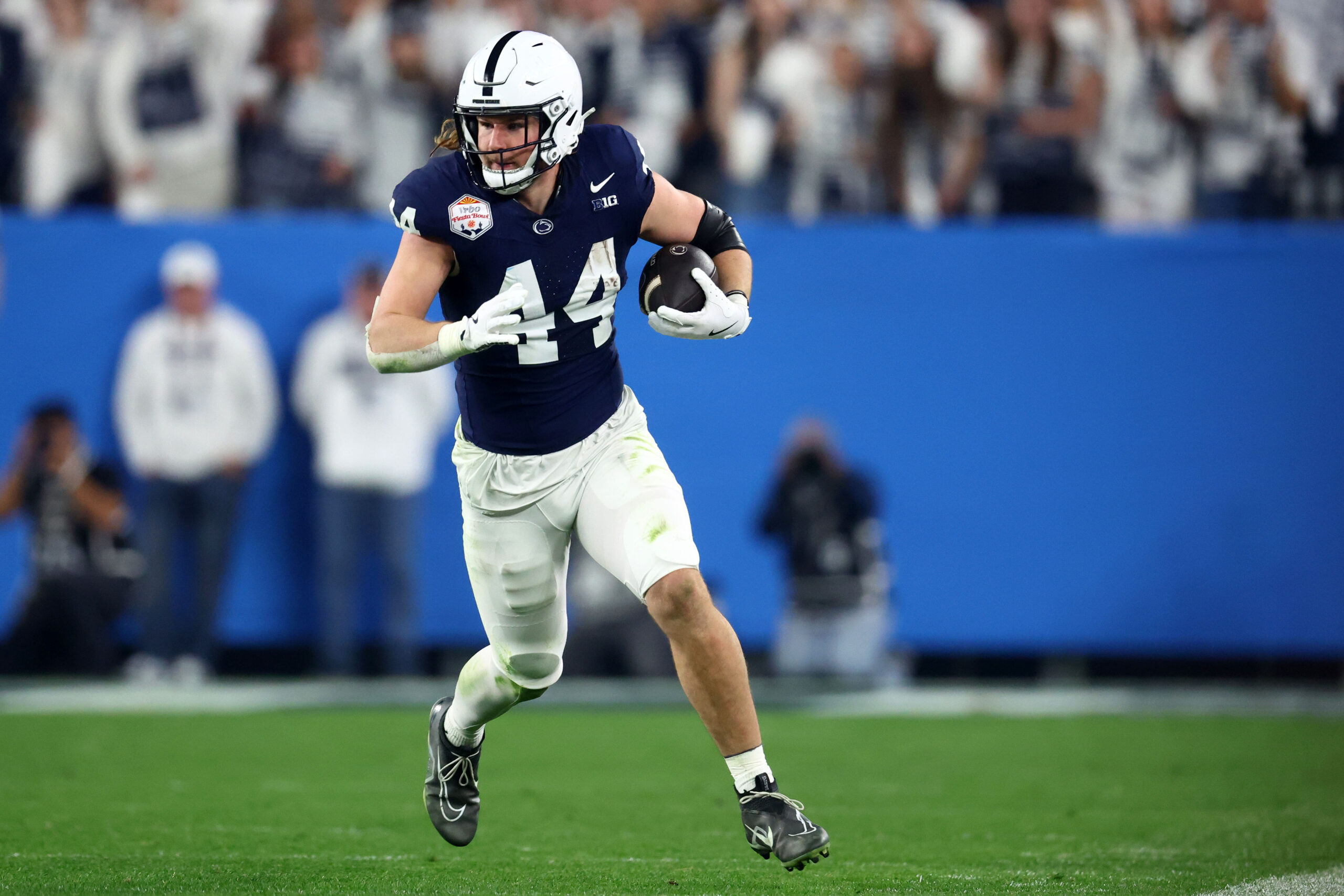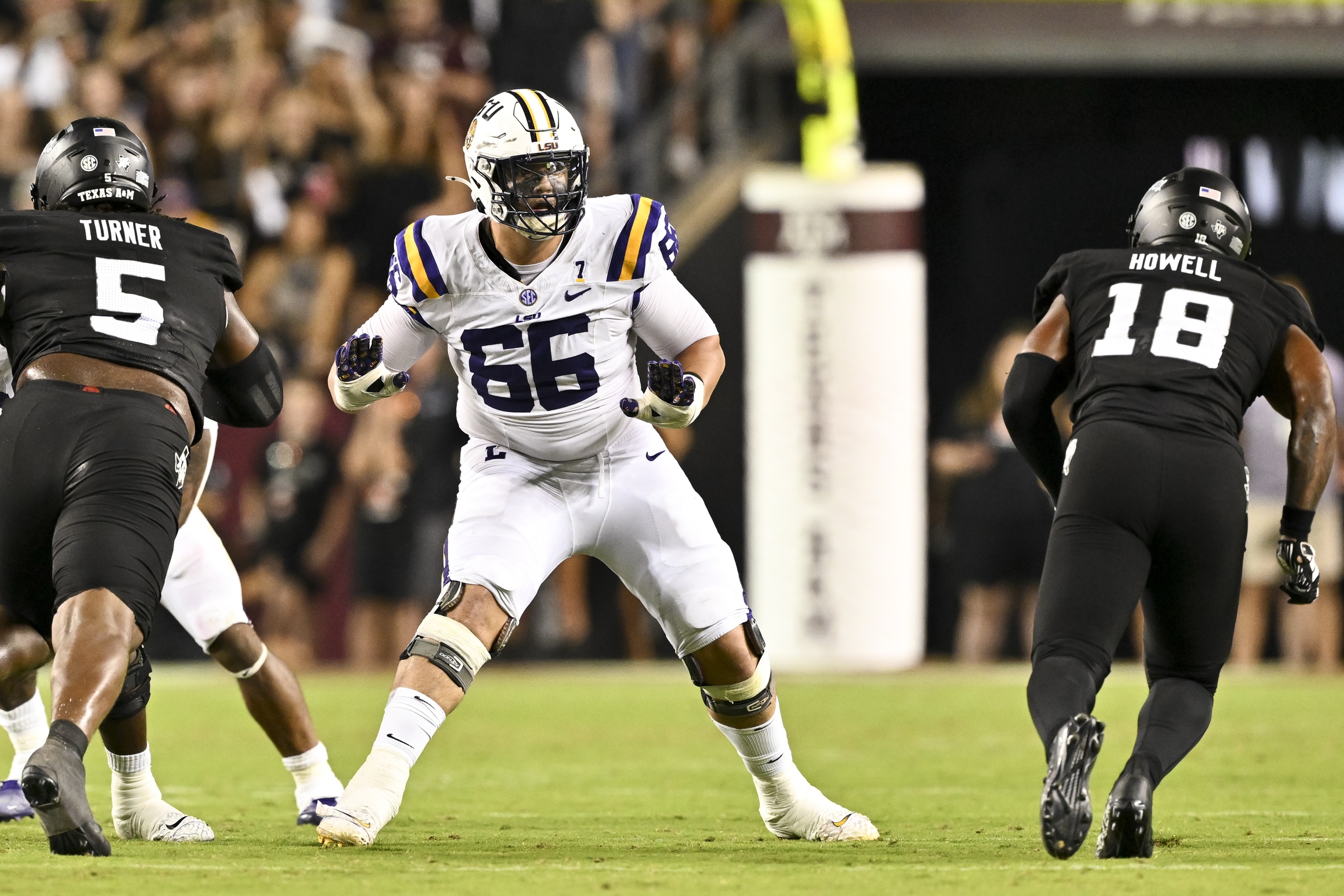NFL Analysis
6/1/22
13 min read
The State of NFL Free Agency: Part 1
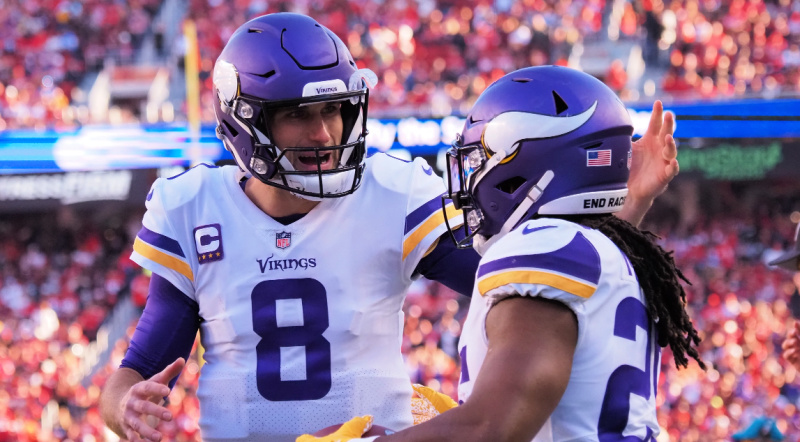
Study by Jamie Kelly
The start of a new league year is a time we all get excited for. While mostly ceremonious for operators within the NFL walls, for most of us it signals the dawn of NFL free agency, a time when vast sums of money will be spent on star players to improve our favorite teams. We get bought in to the movements of players: which airport are they at? Have they arrived at the team facility? Is this visit their final pitch meeting? We then get bought into the contract figures: the per year average, number of years, guaranteed money etc… And then after all that’s done, and the ink is dry, we can start to build the picture of how this newly paid superstar will take our favorite team to the Super Bowl.
It all sounds good on paper. Top players getting cash they’ve earned. Teams finally securing the missing piece to put them over the top. But there’s a catch.
This system doesn’t appear to really work, at least from the team’s perspective.
While of course there are exceptions, it appears the well-trodden road of free agent signings appears is littered with highly paid failures, unsuccessful teams, and a ton of regret.
To help us know for sure, we’ve charted over 300 Free Agent transactions from deals signed between 2015 and 2019 to give us a perspective of how effective players have been post-signing compared to before their free agency, and how worth it they were to their acquiring team.
In this multi-part series, we’ll be going position-by-position, digging into each position’s own unique situation (in this part QB/RB/TE/WR), and providing insight into where teams have historically succeeded and failed in NFL free agency.
Study Methodology
To build our target dataset, we’ve used the following set of criteria:
- All Free Agent transactions signed between the 2015 and 2019 classes where the player switched teams – no re-signing or contract reconstructions will be included in this study
- Positional datasets have been limited to players with a minimum $3m+ per year contract value to focus this study on players likely to be in a rotational or starting roles with their new team — for some positions such as QB and RB we’ve lowered this threshold to ensure we have enough data
- Signings involving trades/ sign-and-trade type deals have also not been included
We’ve used the Approximate Value metric from Pro Football Reference to give us a standardized metric of performance that we can reliably use across positional groups. We’ll be using the AV measure as part of our two key metrics for every transaction:
- Yearly AV vs. Expectation – this is the amount of yearly AV a player should be expected to deliver for his new team given past performance
- Yearly AV vs. $$$ Expectation – this is a metric which takes the Average yearly contract amount for the FA signing and matches this to an amount a star player of that compensation should deliver – this uses franchise tag numbers and yearly AV highs per position to deliver us our outcome
Using these two metrics we’ll be charting each position using a scatter-graph allowing us to see which players have performed according to their pre-FA career and performed to the expectation of their contract value.
All contract information was sourced via Over the Cap.
Quarterbacks
Overview
It’s rare talented Quarterbacks exchange teams in Free Agency, and that’s for the obvious reason that they are massively valuable. Either a team wants to retain a star QB or will have a willing group of buyers wanting to trade for them. That leaves the QB market traditionally with players fitting into these categories:
- Back-up who has solid tape in limited time at a former team and is now viewed as a potential starter for another franchise
- Journeyman drifting to another team either as an upper echelon back-up or stop-gap starter as the team lines up a young QB for the future
Kirk Cousins to Minnesota is a bit of an anomaly in this set of transactions — we’ll get to him shortly.
Quarterback FA Statistics
- Only 3 of the 14 players included in this study completed their FA contract
- Only 1 of the 14 players was still on the acquiring team the year after his contract ended (Kirk Cousins)
- 5/14 had positive Yearly AV vs. expectation values
- 3/14 had positive Yearly AV vs. $$$ expectation values
- - 0.96 Yearly AV vs. expectation for the whole group
- - 2.97 Yearly AV $ vs. expectation for the whole group
When do QBs work out?
Kirk Cousins is a unique situation having had a successful career (middle of the road starter at worst) in Washington. His ability to reach the FA market was one of ‘betting on himself’ with short-term deals/ franchise tags to maneuver his way free of WAS. While a good signing for MIN, it isn’t a deal we can base a QB Free Agent strategy on.
Examining four other deals that performed ‘solid’ (those deals with positive returns in one or both of our metrics): Ryan Fitzpatrick to MIA, Josh McCown to TB, Case Keenum to DEN, and Brian Hoyer to HOU, we can see a trend of 30+ year old QBs with decent contract AVs expected to hold the fort down for a short period of time. All these successful QBs had played for at least two organizations prior to signing elsewhere as a FA.
All these QBs were under 6-foot-4, and only Josh McCown was over 6-foot-3. Athleticism seems not to be a factor in success/failure for FA QBs.
When do QBs NOT work out?
The clear indication here is to beware the group we’ve called the 414, players that have played 4 years, with 1 team for all those 4 NFL seasons. This is the type of player that’s simply played out their rookie contract.
Three 414 deals in this set include: Mike Glennon to CHI, AJ McCarron to BUF, and Brock Osweiler to HOU. All had negative scores in both metrics (save for Osweiler benefiting from a very low expectation bar so just scrapes a positive AV vs. expectation grade). All these QBs are over 6-foot-3 and 220 pounds.
Best FA signing
Kirk Cousins is the obvious one, but we’ll opt for Ryan Fitzpatrick’s move to the Miami Dolphins in 2019. Playing on a 2yr, $11m contract, he recorded 17 AV points across 2019/2020, acting as a very effective bridge QB to Tua Tagovailoa.
Worst FA signing
Nick Foles to JAX could take it, but situation and injuries were the primary cause of his underperformance, so we’ll go with Mike Glennon to CHI in 2017. After securing a 3yr, $45m (with $18.5 guaranteed) he only generated 2 AV in a single season with the Bears.
Running Backs
Overview
Of all positions, Running Back, likely has the greatest ‘buyer beware’ feeling in the market today. In such a physical role, performance degradation over time is to be expected and it shows in the numbers.
Typically, runners who get paid to the level studied here are drafted players. It goes all the way through the rounds but the mid-rounds 3-5 especially are where this group comes from. Most of these deals are to the 414 crowd and come to RBs in their mid-to-late 20s.
Running Back FA Statistics
- 8 of 24 players included in this study completed their FA contract
- Only 1 of the 24 players was still on the acquiring team the year after his contract ended (Brandon Bolden)
- 3/24 had positive Yearly AV vs. expectation values
- 11/24 had positive Yearly AV vs. $$$ expectation values
- - 3.16 Yearly AV vs. expectation for the whole group
- - 0.74 Yearly AV $ vs. expectation for the whole group
When do RBs work out?
Even if it means making the signing when the Runner is 29/30, it looks from the data that signing an RB who has had two prior teams is a greater predictor of success. Of the top 11 runners in Yearly AV vs. expectation, seven had played for more than one franchise.
Athleticism doesn’t appear to be the biggest predictor of success here. The top 11 runners in Yearly AV vs. expectation had a RAS score of 6.56, vs. the bottom 14 whom had an average of 7.72.
When do RBs NOT work out?
Contrasting the stat above, when looking at the bottom 14 in Yearly AV vs. expectation, 12 had only played for 1 NFL team. The 414/ 515 crowd come with risk. They’re more likely to be in their mid-twenties, have not changed situation successfully before, and have not battled through the mid/late twenties where RB decline begins to show.
Best FA signing
Latavius Murray to NO in 2019. While he only played two of his four contracted years, earning $7.8m of a $14.4m contract value, his 13 AV points over those 2 years represented a good return on investment.
Worst FA signing
Not even close, LeVeon Bell to NYJ in 2019. His production in PIT was spectacular but with the holdout and huge contract it always had a high likelihood of failure. Despite a 4yr, $52m contract, Bell contributed only 6 AV in his time with the Jets.
Tight Ends/ Full Backs
Overview
Due to the small sample size of eligible transactions, we’ve grouped the five FB deals with the Tight End group here.
The FB/TE group here is largely built off mid-round draft picks (rounds 3-5) and are part of the 414 crowd. 19 of the 29 players included in this study had only played for one NFL franchise before hitting free agency.
Yearly AV expectations for TEs were one of the closest to zero of any positional groups suggesting evaluations/ projections of this position are accurate in general.
Overspending is a theme however with TEs, as only 2 of the 29 players managed to outperform the $ expectation on their contract, with the average across all deals coming in at -3.60 AV vs. $ expectation.
Tight End FA Statistics
- 7 of 29 players included in this study completed their FA contract
- 6 of the 29 players were still on the acquiring team the year after his contract ended
- 13/29 had positive Yearly AV vs. expectation values
- 2/29 had positive Yearly AV vs. $$$ expectation values
- - 0.32 Yearly AV vs. expectation for the whole group
- - 3.60 Yearly AV $ vs. expectation for the whole group
When do TEs work out?
Unlike other positions, youth appears to be a positive success factor here. Of the 13 players with positive Yearly AV vs. expectation the average age at signing was 27.7 years old, with 7 at 27 years of age or younger. The 414 affect we’ve seen at QB and RB does not play out here with TEs as we’ve had charted many above-the-line deals from this group. There is no real trend between physical dimensions or RAS score between success and failure.
When do TEs NOT work out?
Age/ experience appears to be a negative factor in projecting post FA success. Of those with negative Yearly AV vs. expectation the average years in the league was 6.125 and age was 29.06.
Best FA signing
For Tight Ends, Jared Cook to the Raiders in 2017. Contributed 13 AV in two years while playing on a 2yr, $10.6m, contract with only $5m in guarantees.
For Fullbacks, Kyle Juszczyk, who has been an excellent contributor in SF at Fullback with 3.50 yearly AV, above and beyond his 1.50 average in Baltimore. Given fullbacks don’t have a set franchise tag value for their specific position, the vs. $ expectation is unfair given their ability to contribute. However, his 4yr, $21m, contract looks very strong in hindsight.
Worst FA signing
Jimmy Graham to GB in 2018. While inarguably a great player in his prime, this 3yr, $30m contract for a 32-year-old at time of signing has not aged well. In two years, he contributed just 9 AV, a -3.13 yearly AV vs. expectation, and a -7.77 yearly AV vs. $ expectation.
Wide Receivers
Overview
This group of WR receivers sees a diverse set of backgrounds with plenty of 414s and older players in their early 30s on their third contract.
We see a lot of high draft picks (14/27 are either first or second round draft picks originally) and on the other end of the spectrum, five UDFAs. The shorter, slot receiver type is also well represented with 10/27 WRs under six feet.
Wide Receiver FA Statistics
- 4 of 27 WRs included in this study completed their FA contract (including Robert Woods who was given a pay rise in a renegotiated deal from his FA contract a big rarity!)
- 3 of the 27 WRs were still on the acquiring team the year after his contract ended
- 11/27 had positive Yearly AV vs. expectation values
- 9/27 had positive Yearly AV vs. $$$ expectation values
- - 1.30 Yearly AV vs. expectation for the whole group
- - 1.26 Yearly AV $ vs. expectation for the whole group
When do WRs work out?
Youth again appears to be a positive success factor here. Of the 11 players with positive Yearly AV vs. expectation the average age at signing was 27 years old, with 4 of the top 6 scores for players 26 and under at signing.
The 414 affect we’ve seen at QB and RB does not play out here with WRs either as 8 of the top 11 grades only had played for 1 franchise before coming up for FA (Maclin and Beasley had played 5 and 7 years respectively though).
Athleticism also appears over-rated as the top 12 scorers in Yearly AV vs. Expectation had a RAS score of 6.40 vs. the other 15 that had a lofty average RAS of 8.24.
A dominating single-season isn’t a pre-requisite for success either. The single-season AV score was an average of 8 for those with positive scores, however, 6 in a single season was the minimum.
In general, shorter, less athletic, potentially slot-type receivers tend to produce both the best yearly AV vs. expectation and yearly AV vs. $ expectation.
When do WRs NOT work out?
Chasing highly productive players into their 30s is a proven risk. Five of the eight worst Yearly AV vs. expectation performances came from players 31+ years old at the time of signing. This group of five include the names of Golden Tate to NYG, Pierre Garcon to SF, DeSean Jackson to TB, Andre Johnson to IND, and Brandon Marshall to NYG. The group also averaged -3.01 in Yearly AV vs. $ expectation so failed to live up to the same heights as early in their career and failed to deliver to the $ value their contract would imply.
Weight/Size also appears a factor, larger receivers tend to struggle to deliver post-signing, only Allen Robinson (6025) had a positive score over 6-2. The average receiver weight of players with a negative vs. expectation score was 204 pounds vs. 194 pounds for those with positive scores.
Best FA signing
WR Robert Woods to the Rams in 2017. He made a giant leap of 4.88 in yearly AV. Woods' vs. expectation at a value of 5.13 in yearly AV vs. $ expectation. Producing some of the highest scores in the study at both metrics. His 5yr, $34m, contract was ripped up for a deserved pay rise after a three-year run where he generated 31 AV.
Worst FA signing
Pierre Garcon to SF in 2017. A productive player in both IND and WAS, by the time Garcon signed with SF he was 31 and on the downside of his career. He signed a 5Yr, $47.5m deal with $17m GTD but only could deliver 6 AV in two seasons before being moved on.
We’ll be back in part 2, where we’ll be looking at the Offensive and Defensive Lines, before examining LBs, DBs, and how individual teams fare in this flurry of expensive transactions.






